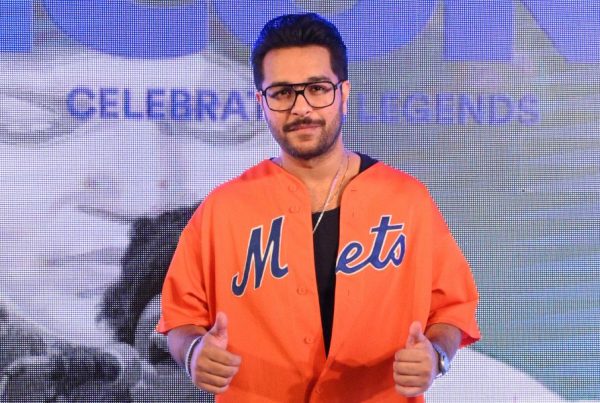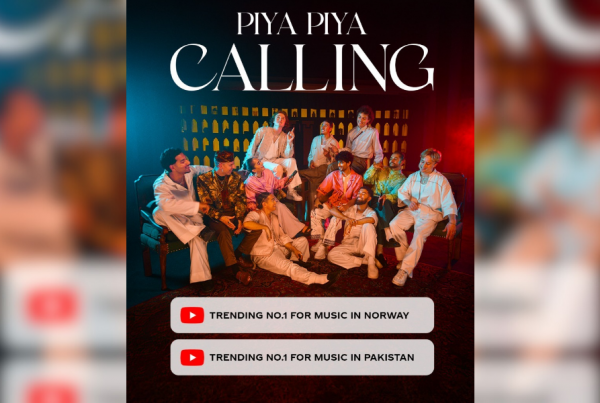Last week the Trade Development Authority of Pakistan (TDAP) and Fashion Pakistan joined forces for a one-of-a-kind fashion event, now established as the Made in Pakistan Fashion Showcase 2017, that aimed for lasting results. The three day event covered two days of established and new designers whereas the third day was dedicated to the Millennials, that is fashion students.
The event, held in Karachi, witnessed a slew of fashion insiders and buyers, over 700 foreign delegates from nations far and wide, hair and make up teams, photographers and more, who gathered for a new and innovative approach to fashion produced here at home.
We spoke to the CEO of Fashion Pakistan, Feri Rawanian and Chairperson Deepak Perwani on the intended impact.

Deepak Perwani’s collection played with accents of ethnicity
TDAP, established in 2006, was made on order of revolutionising and invigorating Pakistan’s trade economy while Fashion Pakistan in 2007 came in development to do the same for the fashion industry. Together this year they put on special events with special circumstances tied in. The three-day event commissioned leading designers in Pakistan to create 10 piece capsule collections that were purchased by TDAP and the third day hosted budding new designers in or fresh out of school. Following their foray onto the runway, the collections would be taken with TDAP around the world to encourage Pakistan’s fashion into the international fashion retail sphere.
“This year there were actual genuine buyers who approached us, TDAP had already forwarded their names and they were all value-added buyers who were looking for embroidery and beading out of Pakistan,” said designer Deepak Perwani, whose collection showed on day 1 of the event.
“The focus from both the Council and TDAP was trying to develop business instead of entertainment for the visiting delegates,” said Feri Rawanian, CEO of FP. “The whole purpose of commissioning the clothes was to allow the designers’ creative expression in western wear without the worry of selling in the local market once the show was over.” Wearability has often been a roadblock in design that would realistically produce profit results for our local designers.

The Pink Tree Company
And what about our designers being able to meet the demands of international markets?
“I think that a few of the designers are able to proceed with volume production and the others can be guided with technical knowhow in the manufacturing process, keeping in mind International Standards,” Deepak responded. Expo Pakistan which ran parallel to the event may have held the solution. “We have been approached by Japan, Netherlands and Italy who have all offered to support in developing these skills.”
“Pakistan is a curiosity at the moment,’ the designer and Chairman of the fashion council added. “We are already seeing the influence of inspiration for many designers, may it be the peshawri chappal or the blanket prints on bags or even mirror work on the shirt or the kameez dress. The possibilities of what Pakistani designers could bring to an international market are endless.”
“The Indian design influence has been strong in the West for almost 60 years, whether it’s the broomstick skirt or tie-dye,” said Feri. “What Pakistan can offer is our indigenous fabrics, methods of embroidery, needlework and a design aesthetic which is in ways different from India but also familiar to consumers.”

Zuria Dor
The collections were well curated and took sophisticated approaches to the task at hand. It was evident by what was presented on the ramp that some designers took this chance to not only make clothes appeal to an international market but did so with out sacrificing the signature elements of garments designed and inspired in Pakistan.
Deepak Perwani’s collection embodied contemporary western cuts adorned in festive thread work and embedded mirror work, and was designed with market enticement in mind, ‘Our collection was retail friendly and everything was priced for the export friendly buyers. They could buy the whole ensemble or individual pieces.’
Similarly, Amna Aqeel included mirror and thread work in her collection and reached for lightweight neutrals paired with familiar prints. FNKAsia also went with combining the prints it’s come to be known for with silhouettes that veered western but stayed true to the brand identity. Utilising prints as well while exhibiting their Pakistani roots through the cuts they sent down the runway, Gulabo included draped trousers and doti style pants. Adnan Pardesy, also delivered fusion style silhouettes with nods to traditional kameez cuts peppered throughout and a stand out heavily worked men’s jacket.

An innovative, ethnic design by FNKAsia
Other designers opted to make fabric and silhouettes stand without embroidery, including an extremely wearable offering by Tena Durrani, contemporary trendy ensembles by Zuria Dor, fun and light collection by Jafferjees, and often overlooked slice of our textile industry, leathers were displayed in stylish and fashion forward cuts by Nova Leather. Hassan Riaz took risks and showcased a collection where one could easily see a piece or two being tapped by western stylists for editorials or even red carpets.
The impact of the show and the follow up of TDAP taking these collections further out into the world will be seen in the time to come. The overwhelming positive response to the event itself and the way designers rose to the occasion sets the groundwork for the shows premise to become a fixture in the industry.





